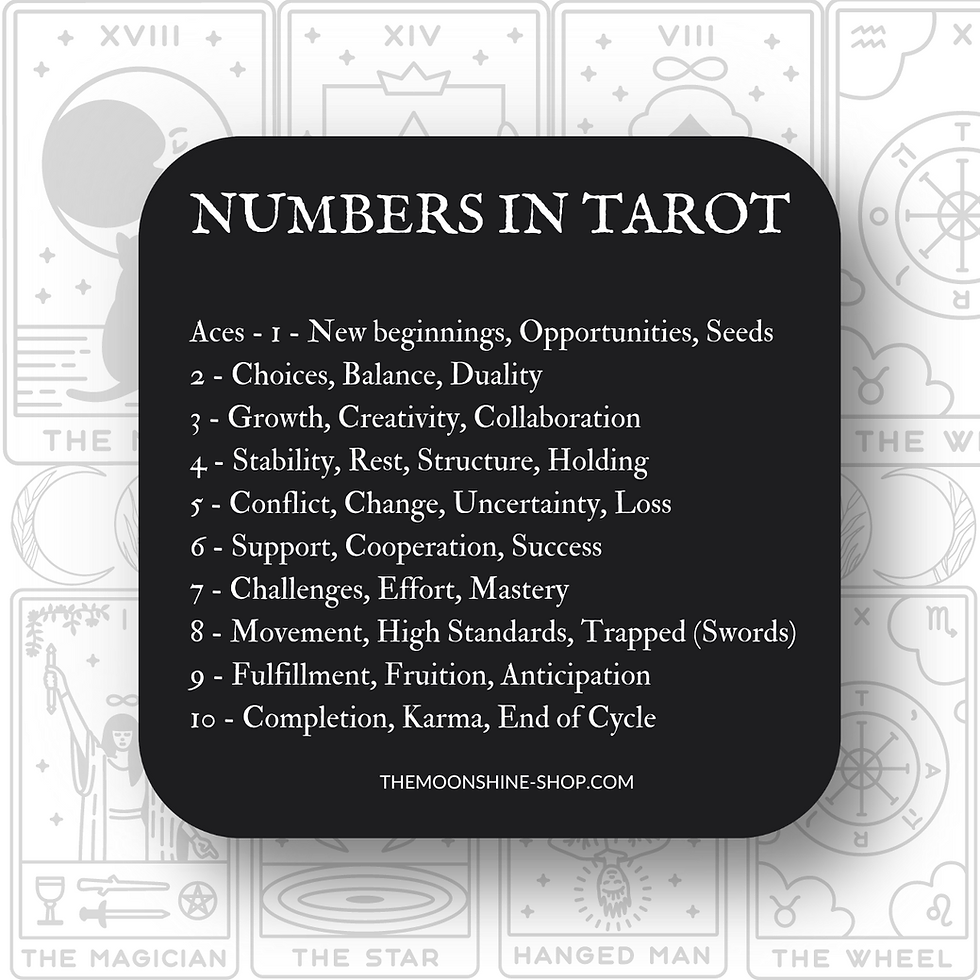A Brief History of Tarot
- Kate Putnam
- Jun 3, 2023
- 4 min read
Updated: Mar 15
The early history of the 78 Tarot cards is shrouded in mystery and speculation.
Some people believe that they derived from the sacred books of ancient Egypt.
Others that they originated in India or China, and were brought to Europe by gypsies.

Other historians believe that they were invented by a group of medieval cabalists. Influences as varied as the Greek mystery religions, Gnosticism, Neoplatonism, Hermetism, Catharism, ancient Arabian and Indian philosophies, and the Jewish cabala have been detected in their symbols.
The Tarot has been claimed to enshrine the secrets of the universe and to hold the key to the true nature of human beings.
The oldest description we have of a set of Tarot cards dates from 1392 when three decks were bought for King Charles VI of France.
The cards, commissioned from an artist – thought to have been Jacques Gringonneur, who was also an astrologer and cabalist – were undoubtedly magnificent, as befitted their royal beneficiary.
Seventeen cards, painted on vellum, with gold edgings and depicted in silver, Lopez lazuli, and a dark red pigment known as “mummy’s dust,” was long thought to belong to this set. They are now, however, judged to be Italian and of later manufacture.

Tarot cards almost certainly preceded playing cards designed for entertainment, to which they are related. Examples exist of 15th-century decks of cards used for games and also for education – a set depicting the order of the universe, for example.
But records show that playing cards were widespread in Europe earlier than this. Gambling with cards was banned in what is now Germany in 1378.
But in 1379 card-playing was one of the events at a festival in Brussels, and, in the same year, the ledgers of the Duke of Brabant (also in modern-day Belgium) recorded money paid for a set of cards.
In 1397 people in Paris were still prohibited from playing cards on working days.
The Tarot has been linked to medieval Italian pageants, known as Triumphs, and the earliest cards may have been gifts from the artists who worked on the pageants to their patrons. Such Triumphs may be the origin of our word “Trumps” for the major cards.
The High Priestess and the Cobbler from a 15th-century Italian deck made for the Milanese Visconti family. Their beautiful images are painted on vellum and edged with gold.
The imagery of the Tarot and other cards has been linked with the pageants held in Italian cities in medieval times. Called Triumphs, these were usually commissioned by one of the noble families and were dramatic stories with a moral theme, possibly related to the ancient 17mystery plays.
Arranged in honor of a dynastic marriage or a visiting Church dignitary, or to celebrate a saint's day, the pageants developed into costly and complicated tableaux that eventually required the invention by engineers of mechanisms to animate them, and the designs of famous artists, such as Leonardo da Vinci, to stage them.
A card game named Triumphs existed from the 14th century and may have developed from cards commemorating one such pageant, commissioned by the patron or presented to him as a souvenir by the grateful artist.
Credit: Tarot Decoder by Kathleen McCormack
About the book:
The essential handbook for everyone who is fascinated by the Tarot. The origins of the Tarot are shrouded in mystery. Some believe that the cards originated in India, while others trace their beginnings back to the sacred books of the ancient Egyptians.
Everything from Greek religions to Arabian philosophies to Jewish Kabbalah has been detected in Tarot symbols, which some believe to contain the secrets of the universe and hold the key to human nature. The origins of the Tarot are shrouded in mystery. Some believe that the cards originated in India, while others trace their beginnings back to the sacred books of the ancient Egyptians.
Everything from Greek religions to Arabian philosophies to Jewish Kabbalah has been detected in Tarot symbols, which some believe to contain the secrets of the universe and hold the key to human nature.
Tarot Decoder traces the meaning and imagery of the cards down through the centuries, starting with the best-known early decks and culminating with the present-day fascination with mysticism and the unexplained.
Featured inside are illustrations of beautiful ancient Tarot decks as well as fine contemporary examples from all over the world. Several methods of laying the cards are explained, ranging from a simple three-card reading to the more complicated forty-two-card method. Readers will develop their Tarot skills in a number of ways by learning how to: Decode the symbols of each card and learn how to get deeper, more personalized readings Find out how the Tarot can fulfill your psychic potential, and learn to forecast your luck, your love life, your career prospects, and your finances.
Understand the roles of the readers and questioner, and discover how to interpret each of the twenty-two cards of the major arcana and the fifty-six cards of the minor arcana Tarot Decoder is an enlightening and highly enjoyable guide to this mystical practice that will reveal the secrets behind the symbols and help you make accurate and meaningful interpretations.




.png)

.png)
Comentários